You're searching for a mindful activity card that can help kids develop social-emotional skills, manage stress, and regulate their emotions. These cards can be a game-changer in the classroom, providing a therapeutic coping skill, calm down strategy, and social-emotional game to support children's emotional well-being and self-regulation. By using these cards, you can help kids develop essential life skills like self-awareness, empathy, and mental health wellbeing. Incorporating mindfulness exercises into daily routines can create a calm and focused learning environment, supporting teachers in managing classroom behaviors and fostering a culture of calm, focus, and emotional regulation that can lead to many more benefits, perhaps even in areas you hadn't considered yet.
Key Takeaways
- Mindful activity cards can be a therapeutic tool for children with autism, providing calming and self-regulation strategies.
- These cards can be used in the classroom or school setting to support children's social-emotional learning and self-regulation skills.
- Calming activities on the cards, such as dragon breathing and guided breathing, can help children manage stress and negative emotions.
- Mindful activity cards can be tailored to meet individual needs and preferences, making them a valuable resource for parents and educators.
- Incorporating mindfulness exercises into daily routines can help promote mental well-being and reduce undesirable behaviors in children.
Benefits of Mindful Activity Cards

By incorporating mindful activity cards into your daily routine, you can significantly enhance your emotional regulation, leading to improved emotional intelligence and a better ability to manage everyday emotions. You'll be able to recognize and handle emotions in a healthy manner, unlocking your sense of stillness and wonder.
With mindful activity cards, you'll build empathy in children, teaching them to unlock their own emotional regulation.
As a teacher or parent, you'll appreciate the ease of use and flexibility of these cards. They provide easy-to-follow steps for emotional regulation, making it simple to integrate into daily classroom routines or family activities. You'll be able to create a calm and focused learning environment, using the cards as a classroom corner therapy tool to support teachers in managing classroom behaviors.
Mindfulness exercises on the cards will help you teach self-regulation techniques, fostering a sense of calm and focus in children. You'll also be able to aid in calming and self-regulation, providing a structured method for dealing with stressful situations.
Therapeutic Benefits for Children
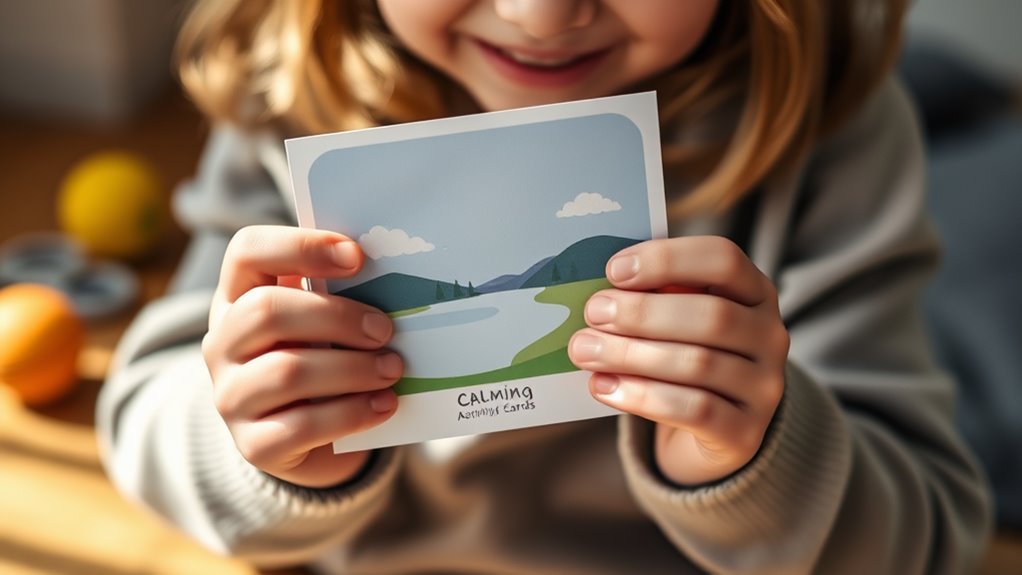
As you explore the therapeutic benefits of mindful activity cards for children, consider how these tools can support emotional regulation and support the development of essential life skills, such as self-awareness, social-emotional learning, and mental health wellbeing, leading to improved relationships, academic performance, and overall resilience.
By engaging with mindful activity cards, children can learn to navigate their emotions, build trusting relationships, and develop the skills necessary for success in school and beyond.
Therapeutic Benefits for Children
Working with children to address their unique needs and abilities is a multifaceted process that requires a comprehensive approach, incorporating various therapeutic strategies to foster growth and development. As a parent or caregiver, you want to ensure that your child receives the best possible support to thrive. By incorporating therapeutic benefits into your child's treatment plan, you can help them develop essential skills and strategies to manage their emotions, behaviors, and relationships.
Therapeutic benefits can include improved social skills development, enhanced communication skills, and increased self-awareness and regulation. Behavioral therapies like Applied Behavior Analysis (ABA), Pivotal Response Treatment, and Early Start Denver Model can help children develop new skills and reduce undesirable behaviors. Speech and language therapies, such as speech therapy and communication skills development, can improve verbal and nonverbal communication understanding, articulation, and relationship development. Occupational therapies, like daily living skills and motor skills development, can enhance fine and gross motor skills, daily living skills, and visual skills.
Emotional Regulation Support
Engage them in calming and breathing techniques, such as dragon breathing, guided breathing, and mindful body scans.
Children can benefit from these techniques by practicing blowing bubbles in a controlled environment, which can help regulate their breathing and calm down when experiencing big emotions.
Create a supportive environment by taking a time-in, creating safe spaces, and practicing mutual regulation.
Role-play difficult situations and praise positive behavior to reinforce good emotional regulation.
By incorporating these strategies into your daily interactions, you can help children develop emotional regulation skills that will benefit them throughout their lives.
- Teach children the "5-4-3-2-1" breathing exercise to help them focus on their body and calm down.
- Practice deep breathing exercises with children, such as inhaling for a count of 5 and exhaling for a count of 4, to help them regulate their emotions.
- Use a calming phrase, such as "I am safe," to help children feel secure and regulated.
- Encourage children to take breaks and engage in physical activity, such as running or dancing, to help them release tension and regulate their emotions.
- Create a "feelings chart" with children to help them identify and express their emotions in a healthy way.
Classroom and School Applications
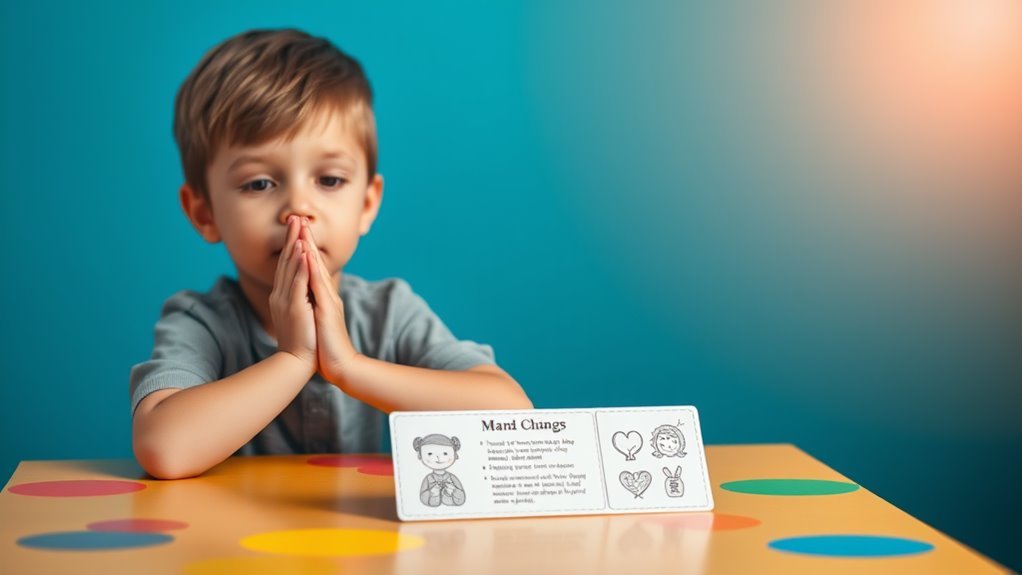
As you consider implementing mindful activities in your classroom, think about how you can tailor these tools to meet the unique needs of your students, from creating designated sensory zones to integrating mindfulness exercises into daily routines. By doing so, you can foster a more supportive and inclusive learning environment that promotes emotional regulation, focus, and overall well-being. By making mindful activities a core part of your classroom practice, you can help your students thrive academically and personally.
As you consider implementing mindful activities in your classroom, think about how you can tailor these tools to meet the unique needs of your students, from creating designated sensory zones to integrating mindfulness exercises into daily routines.
By doing so, you can foster a more supportive and inclusive learning environment that promotes emotional regulation, focus, and overall well-being.
Classroom Setting Applications
In a classroom setting, the integration of mindfulness activities can have a profound impact on both teachers and students, fostering a culture of calm, focus, and emotional regulation. As you navigate the classroom, you can incorporate mindfulness practices to create a more supportive and inclusive environment.
- Integrate Mindfulness Exercises: Start the day with deep breathing exercises or guided meditation to help students and teachers focus and regulate emotions.
- Use Mindful Listening: Utilize bell listening exercises to shift attention to the present moment and surroundings, promoting active listening and engagement.
- Incorporate Body Scans: Guide students to focus on various body parts to develop a sense of gratitude and calm, reducing stress and anxiety.
- Make Transition Times Mindful: Incorporate mindfulness during transitions, such as before class or after recess, to ease stress and promote a sense of calm.
Mindful Activity Usage Strategies
To effectively integrate mindfulness into your classroom or school setting, it's essential to establish a consistent routine that fosters a culture of calm, focus, and emotional regulation among both teachers and students.
Start by implementing mindfulness routines at least 3 times a week for 5 minutes, choosing a consistent time period, such as after lunch. Incorporate mindfulness into your daily routine to make it easier to engage.
When engaging students, encourage participation by allowing them to run their own mindfulness sessions or lead for the week. Research the benefits of mindfulness to increase buy-in and use interactive activities like nature walks or gardening to engage students. Encourage student feedback and create a class roster for students to lead mindfulness sessions.
To create a mindful environment, co-create a mindful space with students, including mindfulness triggers and posters. Use sensory activities like nature walks or mindful eating to engage all five senses. Feature reminders in the classroom to help students feel calm, clear, and connected. By following these strategies, you can empower students to develop a mindfulness habit, promoting self-regulation and overall well-being. Remember, consistency is key, so maintain a regular schedule to ensure student engagement and success.
Autism and Special Needs Support
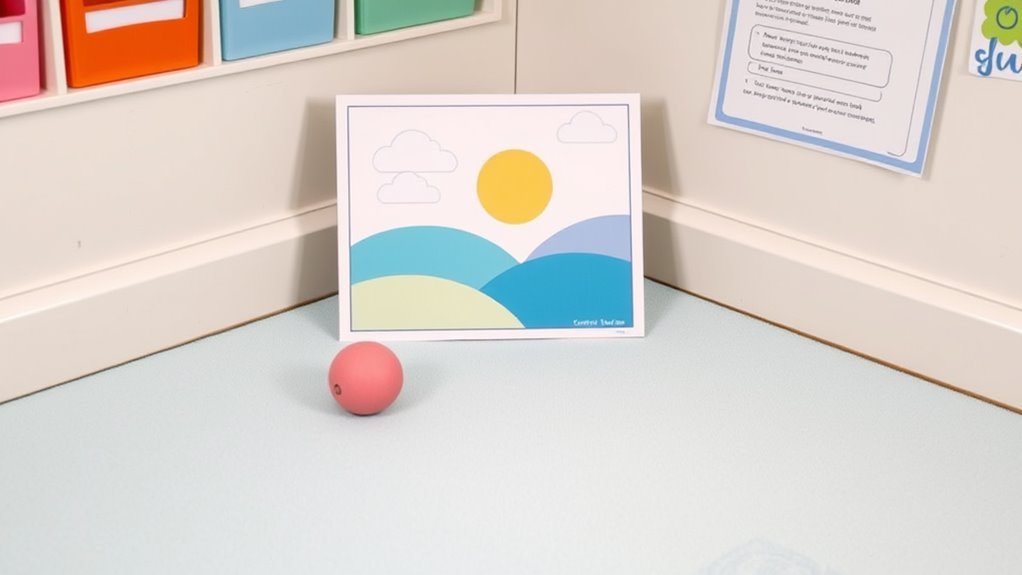
Autism and Special Needs Support is a complex issue that affects millions of individuals worldwide, with its roots deeply embedded in societal, educational, and healthcare systems.
As a individual with autism or special needs, you understand the importance of support and accommodations in order to thrive. Currently, approximately 1 in 36 children in the U.S. have autism, with varying prevalence rates among different racial and ethnic groups. Boys are nearly 4 times more likely to be diagnosed with autism than girls.
To better understand the needs of individuals with autism and special needs, it's essential to examine the current state of special education and inclusion.
For instance, only 41% of students with autism spend 80% or more of their school day in general education classes. This highlights the need for increased support and accommodations in educational settings.
Emotional regulation and social skills are also crucial for individuals with autism and special needs.
Calming and Coping Strategies
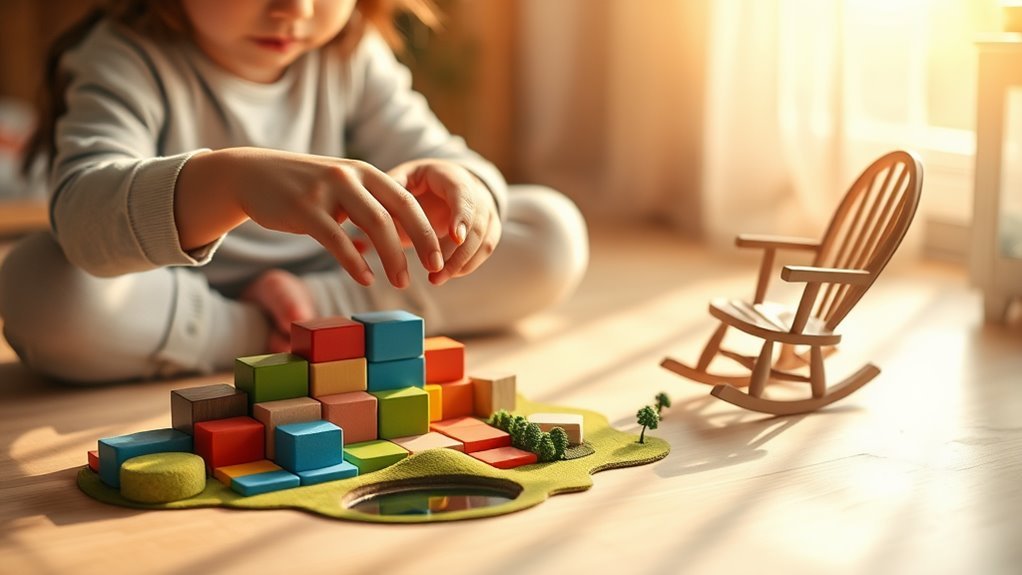
You're taking a crucial step in supporting your child's emotional well-being by exploring calming and coping strategies. By incorporating techniques like breathing exercises, sensory integration, and distraction methods, you can help your child develop effective ways to manage stress and anxiety.
As you navigate these strategies, remember that every child is unique, and it's essential to tailor your approach to meet their individual needs and preferences.
Calming Strategies for Kids
Calming Strategies for Kids are a vital tool in helping them navigate life's challenges with greater ease and resilience. As a parent, caregiver, or educator, you play a significant role in introducing these strategies to kids with Autism and special needs. By incorporating mindful activities into their daily routine, you can help them develop coping skills and improve their overall well-being.
- Breathing and Relaxation Techniques: Try Deep Breathing, inhaling through the nose and exhaling through the mouth, using visuals like smelling a flower and blowing out a birthday candle. You can also try Blowing Bubbles or Counting Deep Breaths to reset the nervous system.
- Physical Activities and Movement: Engage your child in Run Around Outside or Run in Place to release energy. Simple stretches like Stretching or Tense and Relax Muscles can also help calm the body.
- Sensory and Creative Calming: Encourage your child to Coloring, Doodling, or Build Something to express themselves creatively. You can also try Using a Weighted Blanket or Smell Favorite Scents to promote relaxation.
Helping Social Emotional Growth
Helping social-emotional growth is a delicate yet crucial aspect of supporting children with Autism and special needs. By fostering a culture of kindness and supportiveness, you can help children develop the skills they need to navigate complex social situations.
Start by establishing consistent routines and creating a predictable, safe environment that fosters security and engagement. Use visual schedules to help children remember and follow routines, and encourage positive interactions through daily greetings and active listening exercises.
As you work with children, incorporate mindful moments into your daily activities. Use tools like stoplight colors or emoji charts to guide student check-ins, and engage children in discussions about managing emotions and expressing feelings through various forms like writing or art.
Effective Coping Techniques Exist
When working with children with Autism and special needs, it's not uncommon for emotional regulation to become a significant challenge. Effective coping techniques exist to help manage anxiety and stress. By incorporating these strategies into daily life, you can develop a toolkit for emotional regulation.
You can start by practicing Deep Breathing Exercises, Sensory Tools, and Music to calm your emotions and reduce anxiety. Regular Physical Activity and Mindfulness Practices like yoga and meditation can also help improve mood and reduce stress. Additionally, using Visual Schedules, Social Stories, and Emotion Charts can help you communicate effectively and recognize emotions.
To build flexibility and adaptability, you can introduce Small Changes gradually, use Positive Reinforcement, and establish Structured Routines. By doing so, you can reduce anxiety related to uncertainty and develop a sense of control. Remember, Coping skills work well when used consistently and in combination with other strategies. By incorporating these techniques into your daily life, you can develop a toolkit for emotional regulation and improve your overall well-being.
Enhancing Emotional Intelligence

As educators, we're not just caregivers; we're also emotional architects, shaping the emotional landscapes of our students through our very presence. To enhance emotional intelligence, we can model positive behavior and show children how to express feelings, listen to others, and work through conflicts.
We can also teach emotional intelligence by using the RULER approach, which includes Recognizing, Understanding, Labeling, Expressing, and Regulating emotions. By using tools like the mood meter, we can help children become aware of their emotions and their impact on teaching and learning.
To develop self-awareness, we can encourage children to talk about their feelings and reflect on their behavior. We can use read-alouds to introduce new vocabulary for emotions and link these feelings to classroom themes. Labeling emotions accurately and understanding their causes and consequences is crucial. By providing a safe and supportive environment for expressing emotions, we can foster self-awareness.
Let's work together to create an environment that enhances emotional intelligence. We can start by modeling and teaching emotional intelligence, and then support children as they develop self-awareness, regulate their emotions, build empathy, and practice problem-solving skills. By taking an active role in enhancing emotional intelligence, we can help children become more resilient, confident, and successful.
Promoting Mental Well-being

Many of us have witnessed firsthand the profound impact that stress, anxiety, and negative emotions can have on a child's mental well-being, from acute distress to long-term mental health concerns. As a parent or caregiver, you play a significant role in promoting your child's mental well-being.
By incorporating mindfulness practices into your daily routine, you can help your child develop the skills they need to manage stress and negative emotions.
Research has shown that mindfulness for children can have a profound impact on their mental health. For example, studies have found that children who practice mindfulness for 40 days show significant reductions in stress and negative emotions. Additionally, mindfulness interventions have been shown to decrease levels of anxiety, anger, and disruptive behavior in schoolchildren.
To promote your child's mental well-being, consider the following strategies:
- Establish a mindfulness routine: Set aside time each day for mindfulness practices, such as deep breathing or meditation.
- Encourage parental involvement: Work with your child to develop a mindfulness practice that you can both enjoy together.
- Seek out mindfulness resources: Utilize mindfulness apps, books, or workshops to support your child's mindfulness development.
Implementation in Various Settings
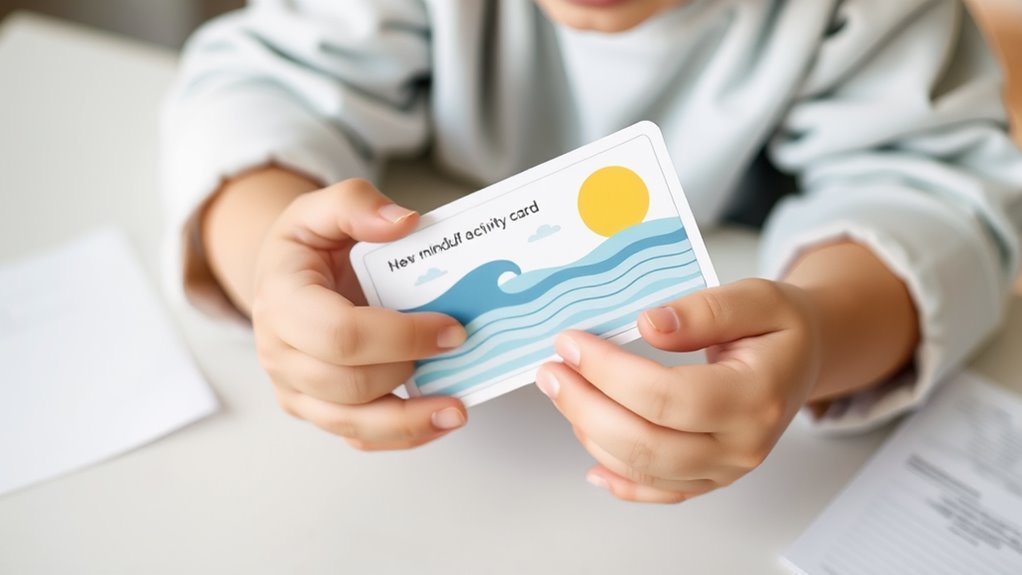
To effectively promote your child's mental well-being, consider implementing mindfulness practices in various settings beyond the home environment. By taking your mindfulness practice to new spaces, you can help your child develop a range of skills that will benefit them throughout their lives.
Mindful activity cards for kids can be a valuable tool in this process.
You can start by introducing mindful games into your child's daily routine, such as morning or bedtime activities. These activities can help your child develop attention, balance, and compassion. For example, you can use the "Friendly Wishes" game to promote kindness and focus, or the "Imaginary Hugs" game to help your child develop emotional awareness.
In the classroom, teachers can incorporate mindful games into their lesson plans to enhance focus and concentration. Mindfulness cards can be used during transitions or breaks to help students stay calm and focused. You can also use these cards to support social-emotional learning curricula and create a calm and supportive classroom environment.
Adapting for Diverse Needs

In creating adaptive mindfulness practices, recognizing and valuing diversity is paramount, allowing each individual to develop a unique relationship with mindfulness that honors their distinct needs and circumstances.
As you adapt mindful activities for diverse needs, consider the following key areas to ensure inclusivity and effectiveness.
- Sensory Input Activities: Incorporate activities that cater to different sensory needs, such as play dough, sensory boxes, and sensory bottles, to provide a calming and engaging experience.
- Visual and Auditory Adjustments: Utilize visual aids like printable kids yoga posters and emotion story stones, and incorporate calming visuals like pinwheel breathing or bubbles, to accommodate different learning styles and preferences.
- Fine Motor and Physical Adaptations: Incorporate activities that promote fine motor skills, such as play dough mats, and physical activities tailored for kids with different abilities, like yoga and deep breathing exercises, to ensure accessibility and engagement.
Measuring Success and Effectiveness
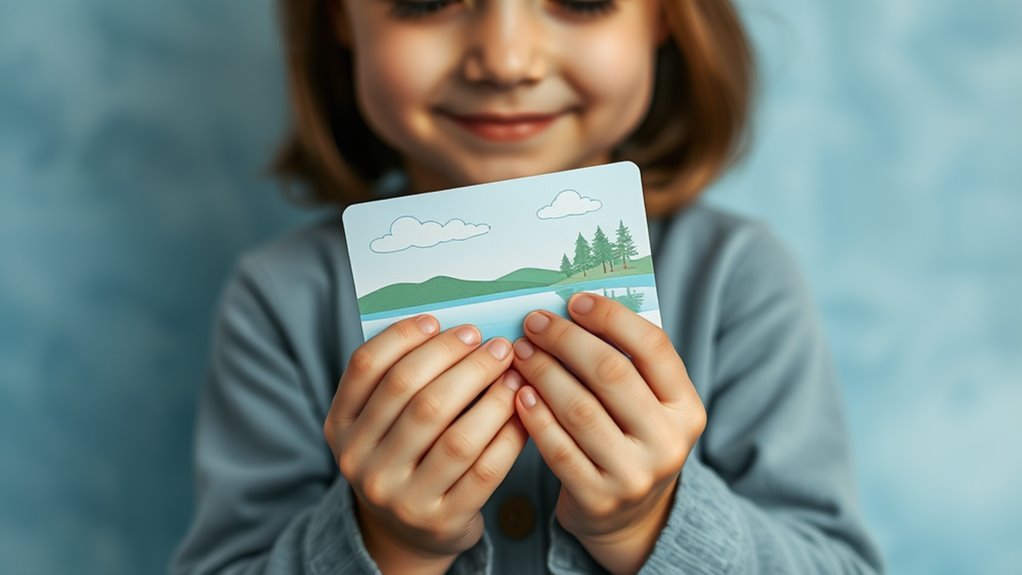
As you embark on measuring the success and effectiveness of your mindful activity card, it's essential to recognize the profound impact it can have on both children's behavior and emotions, as well as parental well-being and parenting.
To do so, you'll want to track changes in children's behavior and emotions, as well as parental outcomes. This can be achieved by assessing improvements in social communication problems, emotional and behavioral functioning, and internalizing, externalizing, and attention problems.
You'll also want to evaluate the impact on parents, including reduced anxiety, stress, and depression, as well as improved parenting competence and mindful awareness. Assessing neurocognitive and social improvements, such as improved attention, reflection, and emotional awareness, can also provide valuable insights.
Long-term follow-up outcomes, including sustained improvements in emotional and behavioral functioning, can help you understand the lasting effects of your mindful activity card.
Conclusion
As you weave these mindful activity cards into the fabric of your classroom, you're not just teaching social-emotional skills, you're crafting a tapestry of calm, where every child can find their thread of serenity – and in doing so, you're weaving a world of tranquility, one card at a time.
